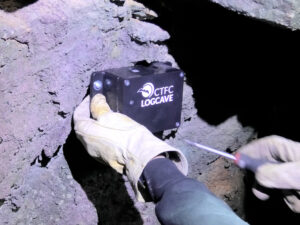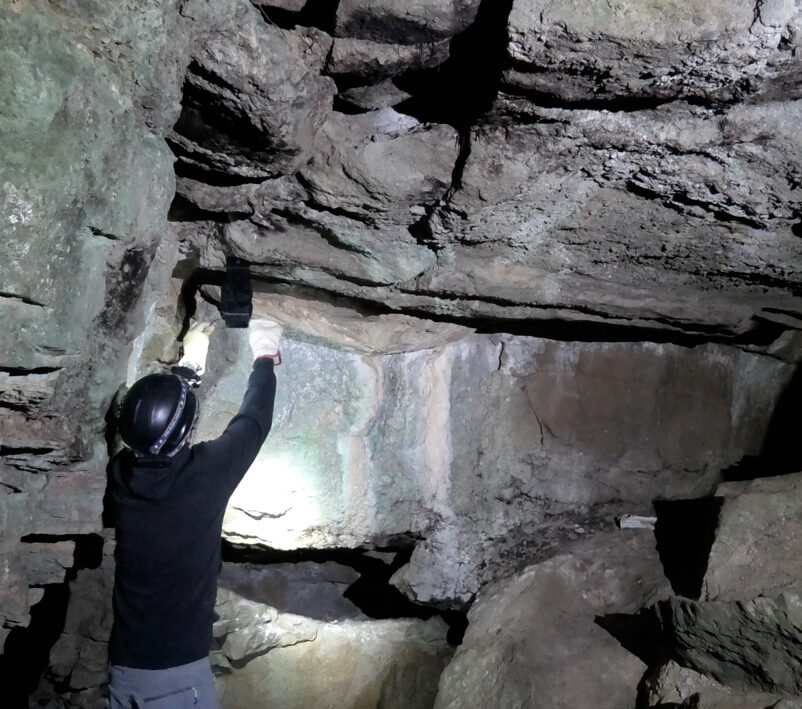Bats are a key part of ecosystems, as they play a fundamental role in controlling insect populations, plant pollination, and seed dispersal. They are also important indicators of environmental health. Protecting them is essential to maintain these ecological functions, especially in the face of increasing threats such as climate change, habitat loss, and human interference in their natural environments, such as underground shelters (caves, mines, galleries, etc.).
 In order to detect human presence in sensitive environments for bats – especially during the breeding or hibernation periods –, a research team from the Forest Science and Technology Centre of Catalonia (CTFC) has developed LOGCAVE-CTFC. This new autonomous, low-power, high-autonomy device is designed to record light, temperature, and humidity data, with accurate time stamps. The development team presented LOGCAVE-CTFC at the 16th European Bate Research Symposium held in Tarragona from September 2nd to the 6th.
In order to detect human presence in sensitive environments for bats – especially during the breeding or hibernation periods –, a research team from the Forest Science and Technology Centre of Catalonia (CTFC) has developed LOGCAVE-CTFC. This new autonomous, low-power, high-autonomy device is designed to record light, temperature, and humidity data, with accurate time stamps. The development team presented LOGCAVE-CTFC at the 16th European Bate Research Symposium held in Tarragona from September 2nd to the 6th.
Advanced and non-invasive technology
LOGCAVE-CTFC is based on detecting small light variations (with thresholds that can be set on-site) associated with artificial lighting. Conventional human presence detectors use infrared or ultrasonic sensors and can often be triggered by non-human related reasons, such as the presence of animals, air currents, etc. In addition, ultrasonic sensors can have a negative impact on wildlife, especially bats. Thus, LOGCAVE-CTFC offers a more accurate and safer solution for research in natural environments.
LOGCAVE-CTFC features:
– Autonomy: With a power consumption of only 2 mW in saver mode and 50 mW in active mode, the device can operate for up to one year on rechargeable batteries.
– Wildlife-friendly: Unlike ultrasonic sensors, LOGCAVE-CTFC does not interfere with cave-dwelling animals, allowing for more accurate behavioral studies and evaluation of access control to protected areas.
– Threshold configuration: The light detection thresholds can be adjusted in situ using a mobile application, according to the needs of the study and the natural light conditions of the space, offering great versatility in its application.
– Easy access to data: Recorded data is easily accessible through a microSD card and/or the mobile app.
Initially created for human presence detection in caves and other underground shelters, LOGCAVE-CTFC has great potential to be applied in other contexts. Thus, LOGCAVE-CTFC can be used in any context that requires tracking light changes, making it a valuable tool for various research and monitoring fields.
The activity developed in this demonstrative project has been funded through the Operation 01.02.01 Technology Transfer of the Rural Development Program of Catalonia 2014-2022.

Last modified: 26 November 2024










